Abstract
Mice were rendered specifically unresponsive to picryl chloride by pretreatment with picryl sulphonic acid. These mice fail to develop contact sensitivity, as judged by increment of ear thickness, when subsequently sensitized on the abdomen and challenged 6 days later with picryl chloride on the ear.
These mice were not in a pure state of classical immune tolerance. This was shown in two ways.
(1) Cells from unresponsive donors were injected intravenously into normal CBA mice. The mice were then sensitized on the same day and challenged 6 days later. `Unresponsive' (but not a variety of control) lymph node cells impaired the development of contact sensitivity to picryl chloride. The impairment was immunologically specific and `unresponsive' cells did not impair the development of contact sensitivity to `oxazolone'.
(2) Unresponsive mice were irradiated and restored with `unresponsive' bone marrow cells. They regained immune competence to picryl chloride when injected with normal lymph node cells and sensitized on the same day, and failed to regain competence when injected with unresponsive lymph node cells. The distinctive finding was that the injection of a mixture of normal and unresponsive lymph node cells failed to restore immune competence. Similar results were obtained when irradiated but otherwise normal recipients were used. Unresponsive cells also impaired the passive (adoptive) transfer of contact sensitivity.
These results show that lymph node cells from mice which are unresponsive to picryl chloride actively and specifically impair the induction or manifestation of contact sensitivity to picryl chloride. It was concluded that this form of unresponsiveness is not classical tolerance and the hypothesis is put forward that the unresponsiveness is due at least in part to antibody mediated depression of contact sensitivity.
Full text
PDF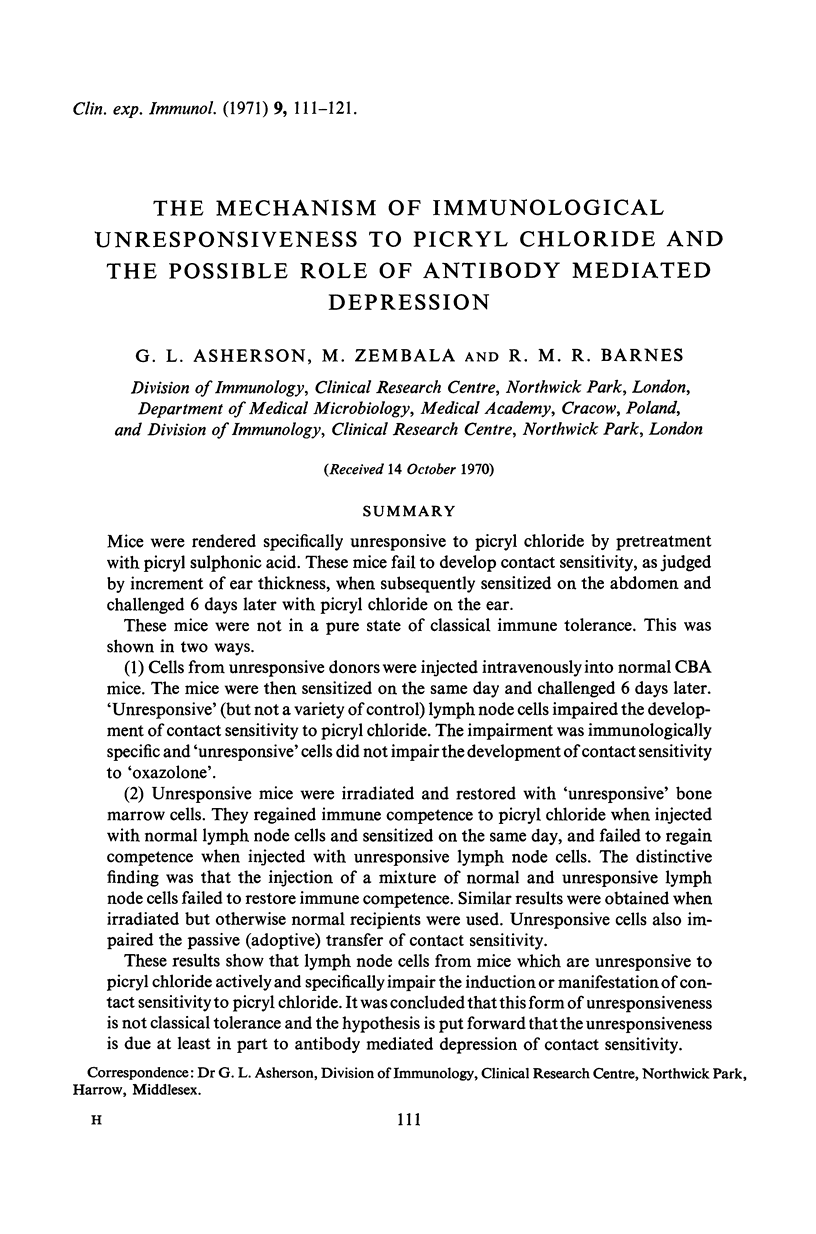
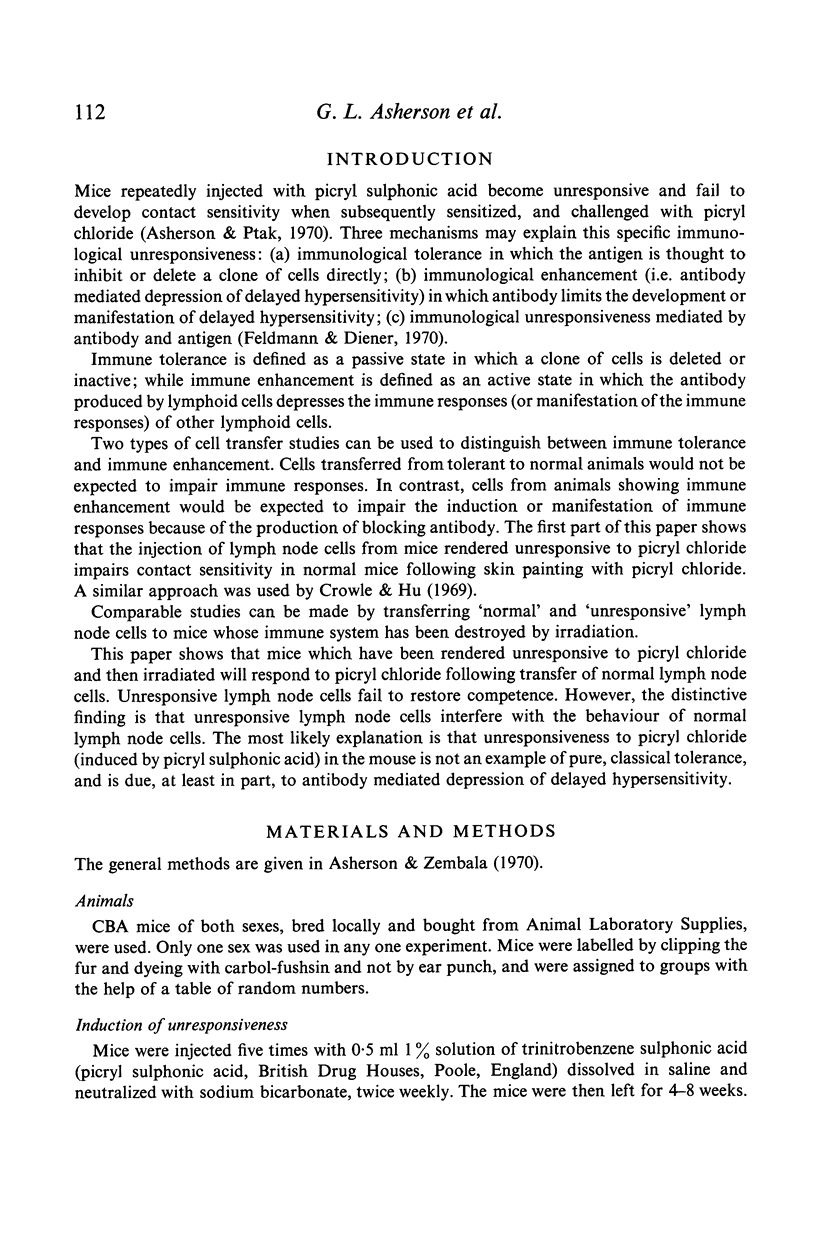
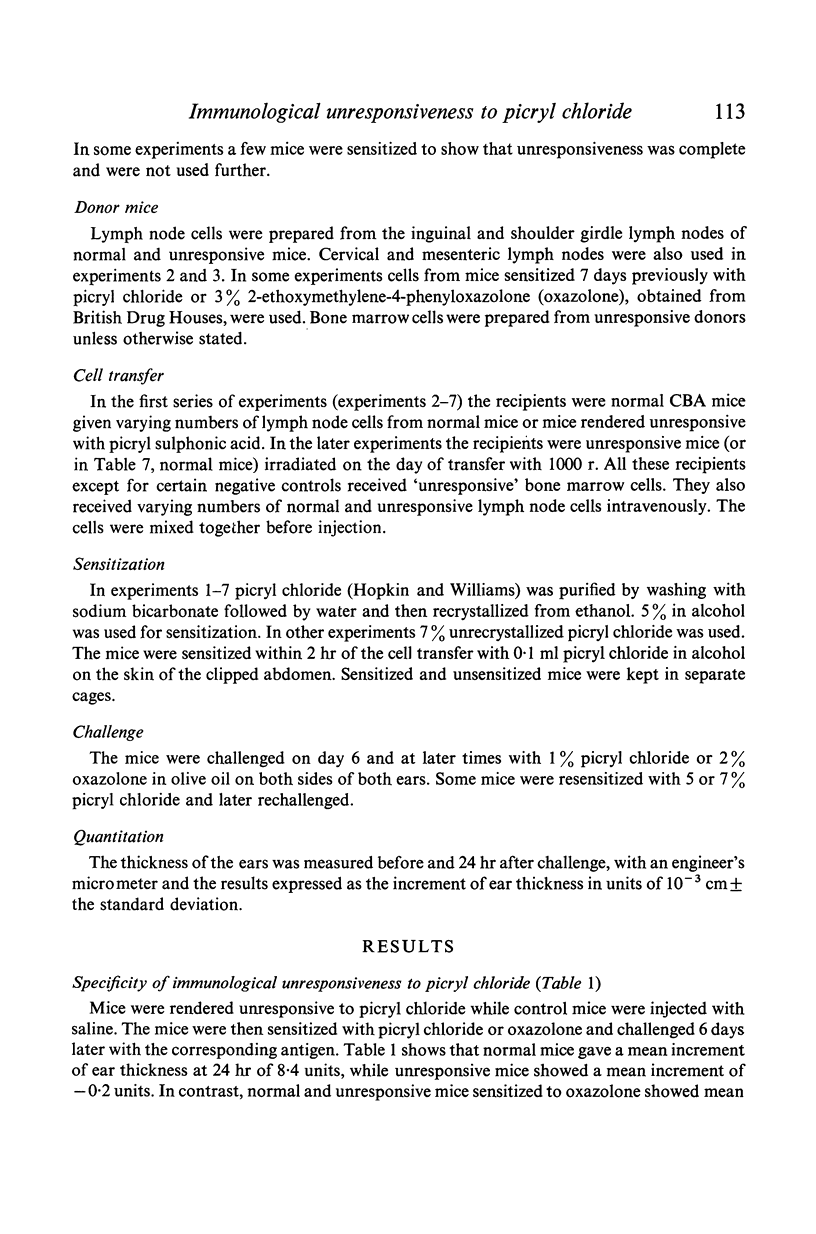
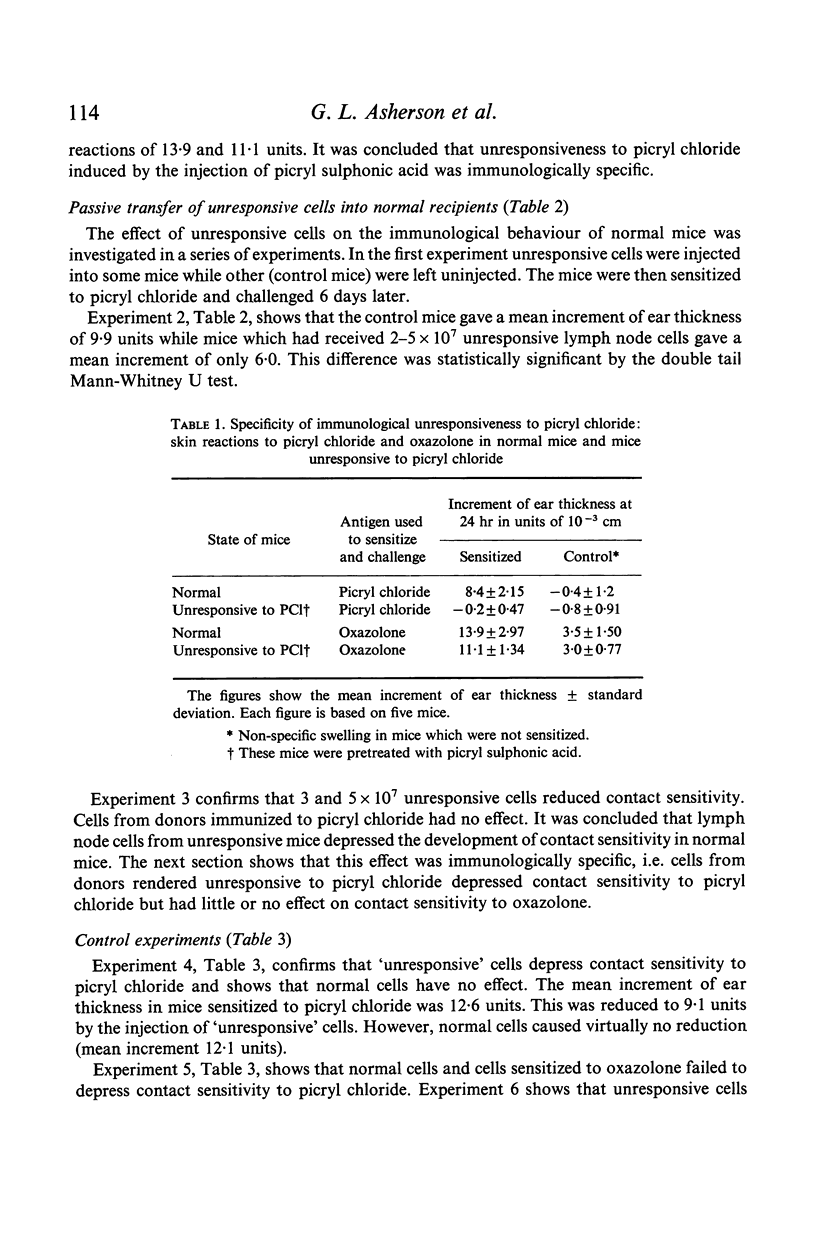
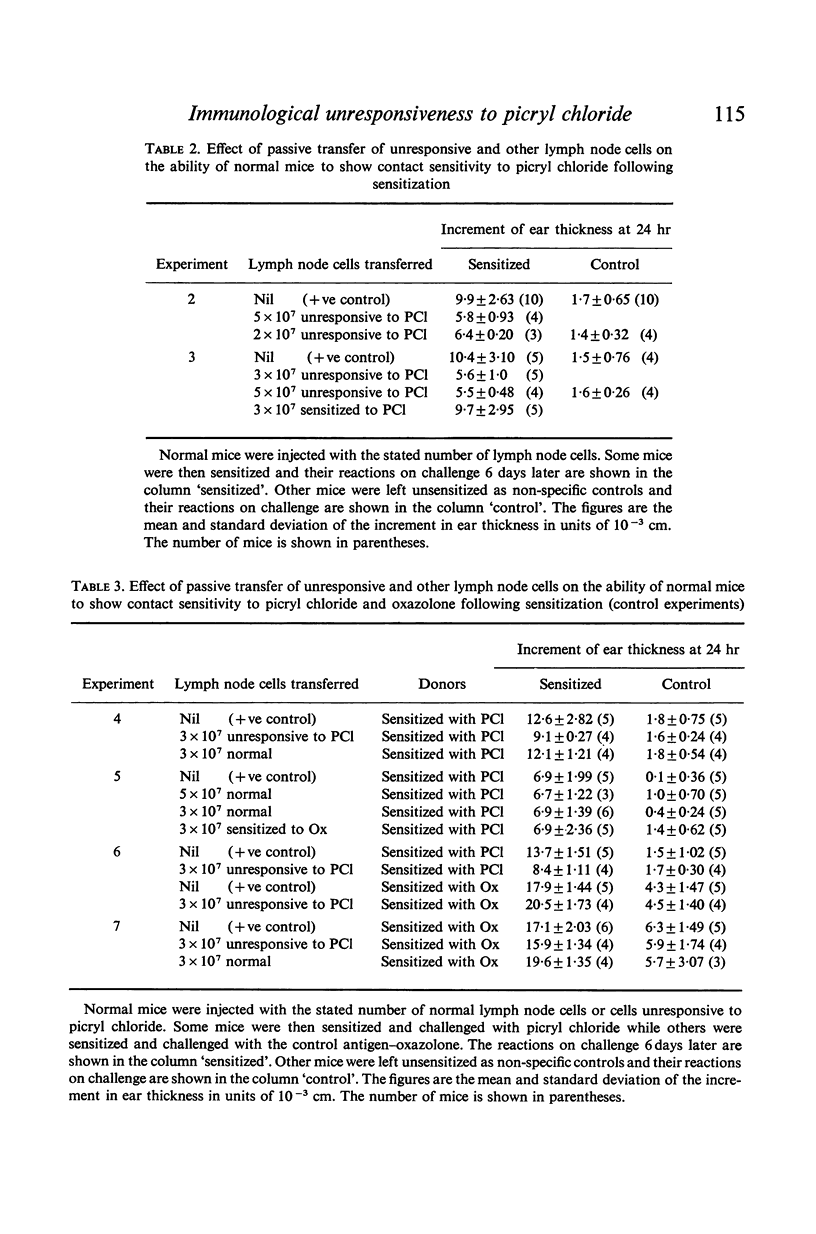
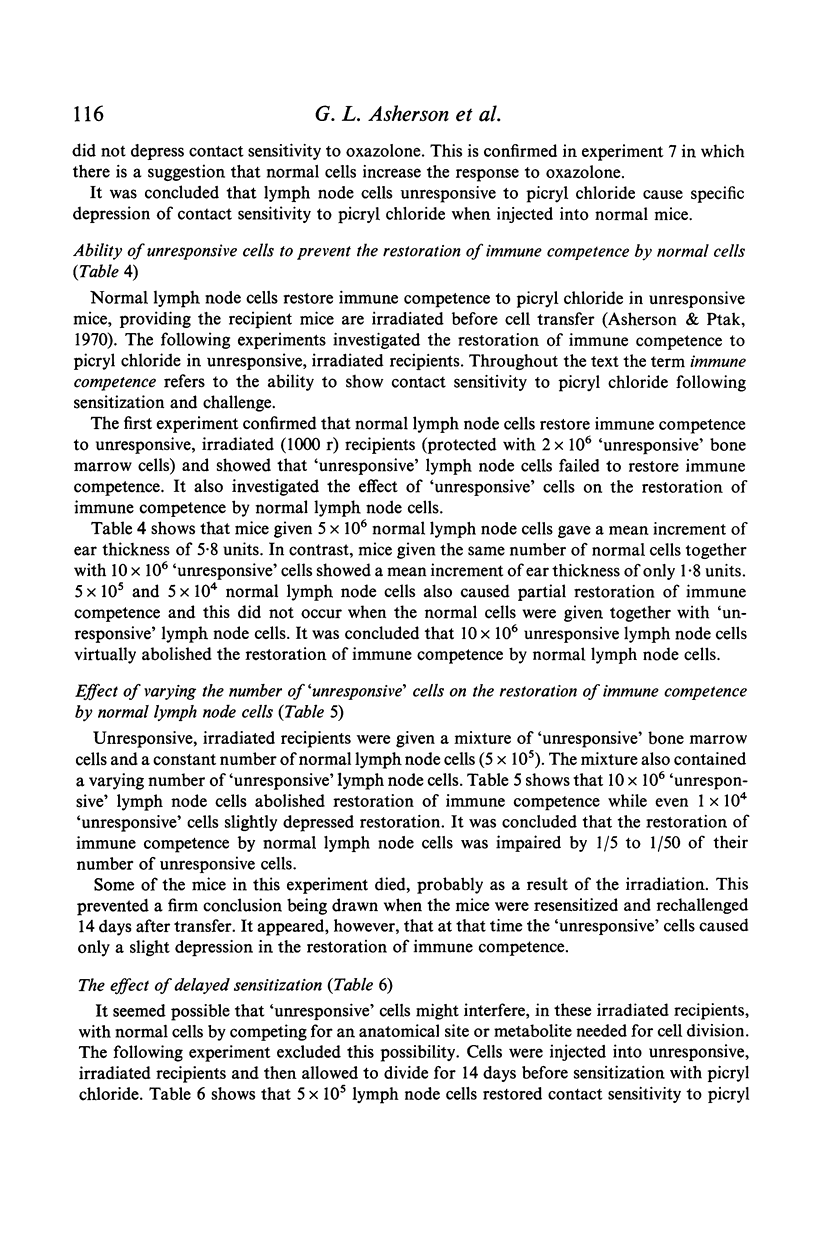
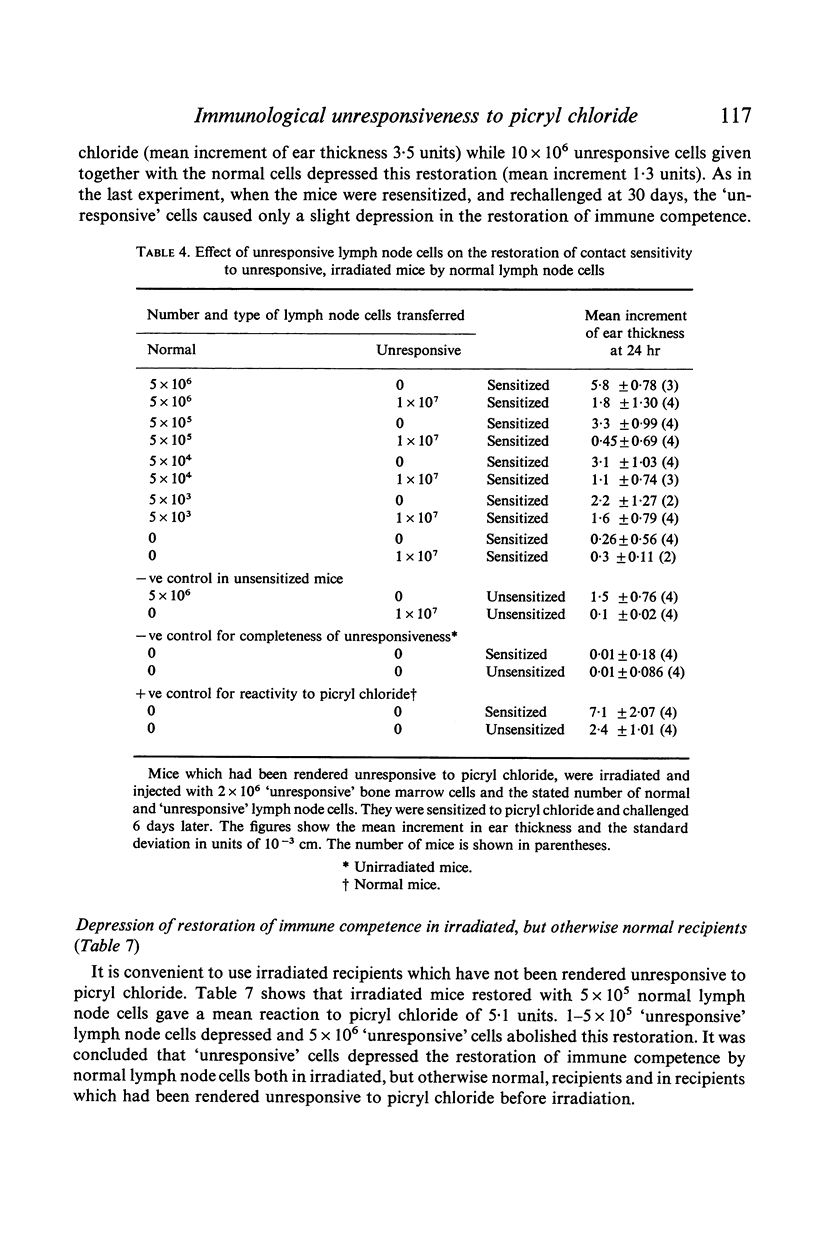
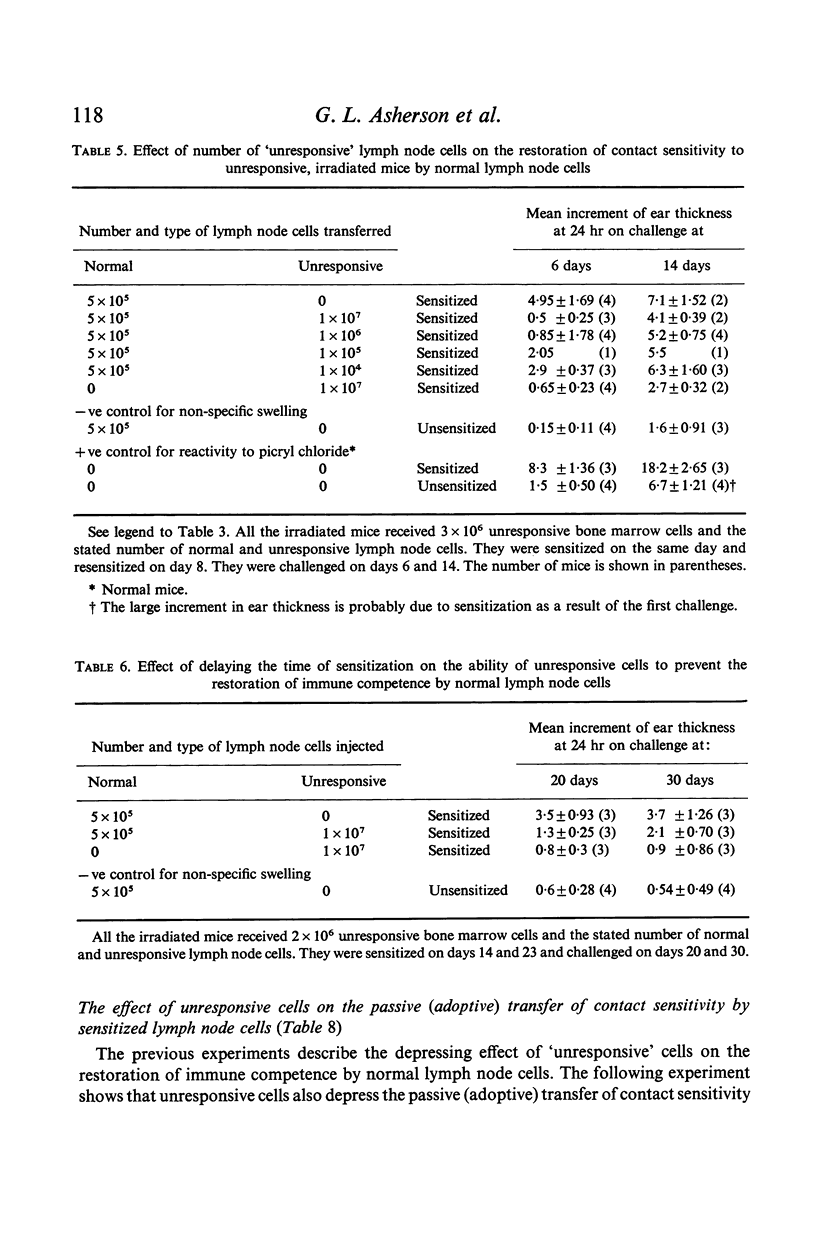
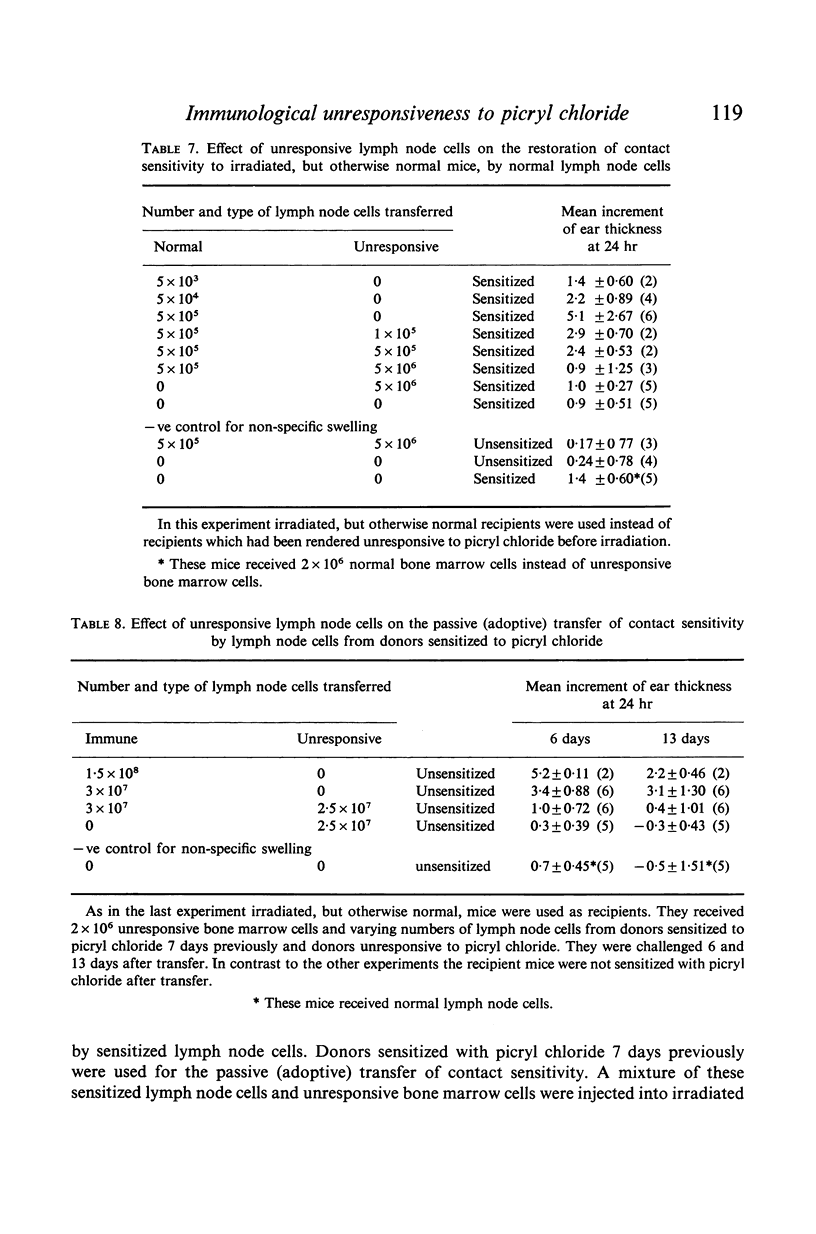
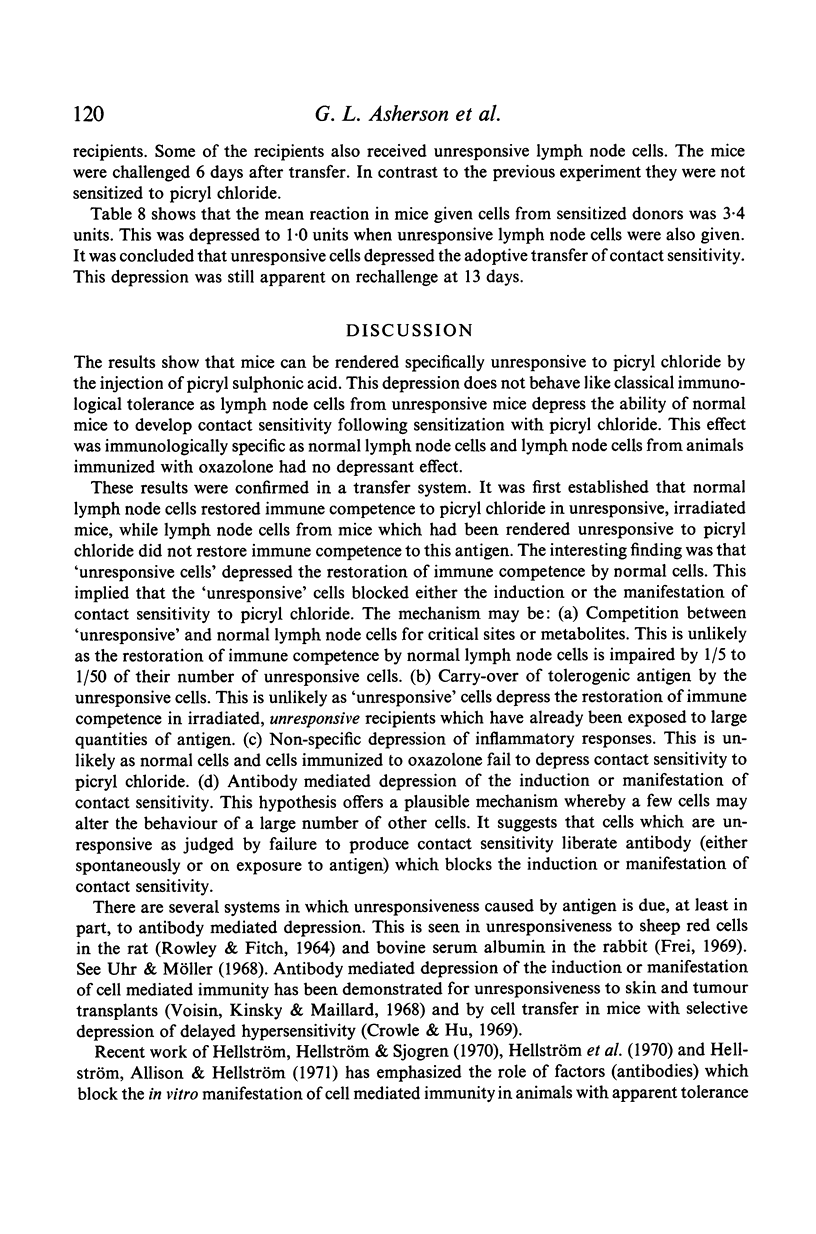
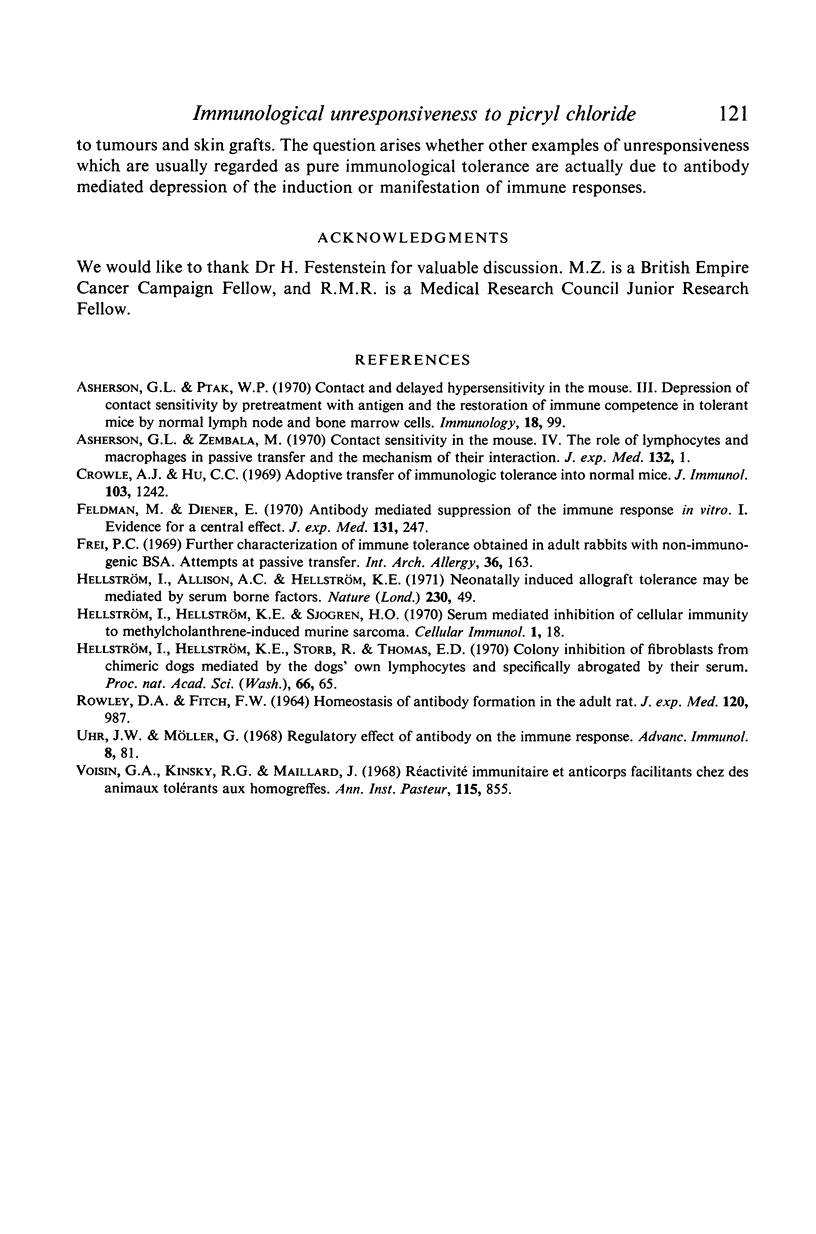
Selected References
These references are in PubMed. This may not be the complete list of references from this article.
- Asherson G. L., Ptak W. Contact and delayed hypersensitivity in the mouse. 3. Depression of contact sensitivity by pre-treatment with antigen and the restoration of immune competence in tolerant mice by normal lymphoid and bone marrow cells. Immunology. 1970 Jan;18(1):99–106. [PMC free article] [PubMed] [Google Scholar]
- Asherson G. L., Zembala M. Contact sensitivity in the mouse. IV. The role of lymphocytes and macrophages in passive transfer and the mechanism of their interaction. J Exp Med. 1970 Jul 1;132(1):1–15. doi: 10.1084/jem.132.1.1. [DOI] [PMC free article] [PubMed] [Google Scholar]
- Crowle A. J., Hu C. C. Adoptive transfer of immunologic tolerance into normal mice. J Immunol. 1969 Dec;103(6):1242–1247. [PubMed] [Google Scholar]
- Feldmann M., Diener E. Antibody-mediated suppression of the immune response in vitro. I. Evidence for a central effect. J Exp Med. 1970 Feb;131(2):247–274. doi: 10.1084/jem.131.2.247. [DOI] [PMC free article] [PubMed] [Google Scholar]
- Glazer I., Ashkenazi A., Magora F. Electrosleep therapy in bronchial asthma. Int Arch Allergy Appl Immunol. 1969;36(1):163–171. doi: 10.1159/000230737. [DOI] [PubMed] [Google Scholar]
- Hellström I., Hellström K. E., Allison A. C. Neonatally induced allograft tolerance may be mediated by serum-borne factors. Nature. 1971 Mar 5;230(5288):49–50. doi: 10.1038/230049a0. [DOI] [PubMed] [Google Scholar]
- Hellström I., Hellström K. E., Storb R., Thomas E. D. Colony inhibition of fibroblasts from chimeric dogs mediated by the dogs' own lymphocytes and specifically abrogated by their serum. Proc Natl Acad Sci U S A. 1970 May;66(1):65–71. doi: 10.1073/pnas.66.1.65. [DOI] [PMC free article] [PubMed] [Google Scholar]
- ROWLEY D. A., FITCH F. W. HOMEOSTASIS OF ANTIBODY FORMATION IN THE ADULT RAT. J Exp Med. 1964 Dec 1;120:987–1005. doi: 10.1084/jem.120.6.987. [DOI] [PMC free article] [PubMed] [Google Scholar]
- Uhr J. W., Möller G. Regulatory effect of antibody on the immune response. Adv Immunol. 1968;8:81–127. doi: 10.1016/s0065-2776(08)60465-4. [DOI] [PubMed] [Google Scholar]
- Voisin G. A., Kinsky R. G., Maillard J. Réativité immunitaire et anticorps facilitants chez des animaux tolérants aux homogreffes. Ann Inst Pasteur (Paris) 1968 Nov;115(5):855–879. [PubMed] [Google Scholar]


